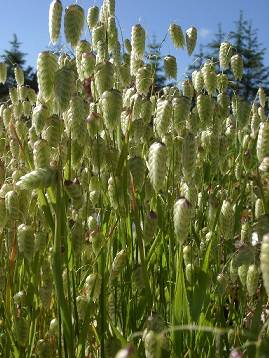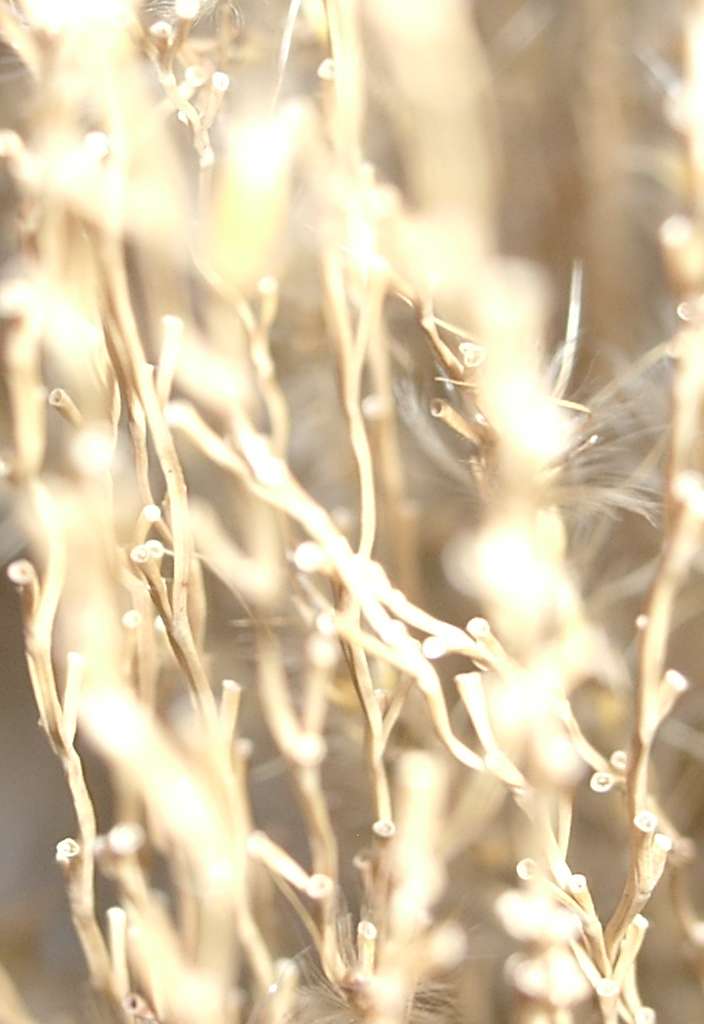Milliways Mail order shop: Advice, tips and tricks.

Encouraging wildlife into your garden
See our autum berry plants article and gardening with grasses.
Even in the smallest of gardens, an area can be set aside to bring in wildlife. Sometimes involving only small changes in the way tasks are undertaken, the results can be a well-balanced environment in which flora and fauna will thrive. The goal in gardening is to harmonise with nature as best as possible. Nature will repay you. The natural defenses you can create by encouraging wildlife in to your garden can be a very effective way of controlling pests and diseases. It can also make the garden a fascinating place to watch the world work. I use cheap wireless cameras to watch the natural world at work in my garden. I saw starling clean out a large poly tunnel of catapillars.One day when the door was left open they just flew in and worked it over. I was just about to spray (nett gain about a fiver). I've seen ants remove every green fly on a fruit tree, they marched in and grabbed what they could. So help nature and it will help you. Even weeds have their uses or plants that were there when you moved in. Many people assume that just because they didn't plant it it must be weed. Sometimes these plants can be giving life and shelter to a range of creatures.
Start out small
When trying to encourage wildlife into your garden remember that bio diversity is key. By providing a range of habitats many different inhabitants can be attracted. If animals are to be encouraged they will require food, water, nesting boxes and roosting sites.
Insects and bugs may not be every gardener’s idea of desirable wildlife, but they are fundamental to increasing the larger and more obvious forms of wildlife in the garden. Many have direct net benefit for the gardener. Gardens with a healthy population of insects and other invertebrates will be self-sustaining and host the widest range of wildlife.
Things to be discoverd in the undergrowth
There are many books and websites, devoted to encouraging birds and butterflies into the garden. Much less attention, however, is given to less-attractive small critters, yet these form the base of the food chain. with out them the whole thing will collapse. The humble dung beetle is fundemental in global weather systems.
Ants are food for birds and frogs, also ants clean your garden and help with compost. They also harvest Aphids and manage other unwanted insects. Caterpillars and spiders are eaten by blue tits and robins; slugs for birds and hedgehogs, frogs, moths and other night-flying insects for bats; and more than 50 percent of a hedgehog’s diet is made up of slugs,beetles, beetle larvae, caterpillars, earwigs and earthworms.
Providing suitable habitats
Ensure your garden is desirable to wildlife by creating suitable habitats. Ponds are extremely valuable to wildlife; even a large tub or half barrel in a small garden will improve bio diversity. A simple bucket planted in the shade with some rocks and a stick in it can help.
Much of the fauna that inhabits your garden is frequently overlooked or simply too small to notice, but can be encouraged by making and using garden compost, stacking rather than burning dead wood leaving some areas with undisturbed leaf litter and, where possible, using only rainwater to top up ponds. Soil is home to many animals, so try to keep off heavy, clay soils when they are wet in order to avoid compaction good for the bugs and the plants. Consider using raised beds and no-dig methods of gardening to maintain good soil structure. If you must burn stuff always check carefully for any hibernating animals. Many Hedgehogs get roasted by accident this way. A hedgehog is worth its weight in gold in the garden.
The leafy underground layer
Plants create the foundation that sustains wildlife. Different coloured flowers attract different pollinators: bees are said to be attracted to the colours blue, lavender, purple and white; moths are guided by scent and pale colours, while butterflies feed on the nectar of plants such as buddleia, Sedum spectabile, Centranthus ruber (red valerian) and sweet William. Beneficial insects such as hoverflies are attracted to plants in the daisy and cow parsley families.
Selecting suitable species
When choosing plants to include in the wildlife garden consider their potential to provide pollen, nectar, fruit or seed valuable for wildlife. It is not just native plants that are beneficial. Many exotic ornamental species produce a plentiful supply of nectar and pollen. Lobelia cardinalis (cardinal flower) is pollinated by hummingbirds in its native habitat, but in the UK its nectar will attract butterflies and moths.
Bedding plants
Though bedding displays are usually brief and spectacular, careful choice of plants can make a difference to wildlife. Annual bedding plants such as Nemesia, Heliotropium (cherry pie plant), and nasturtiums are rich in nectar and pollen, attracting hoverflies and butterflies. Wild flowers and garden plants can both attract moths at night. Consider wild flowers, such as lady’s bedstraw, primrose and purple loosestrife.
Herbaceous border
Spring displays in the herbaceous border begin with flowers such as Pulmonaria and Doronicum, moving into the summer flowers, catmint, Solidago virgaurea (golden rod) and Thalictrum and finally the autumn displays of Helenium, Eryngium (left) and Aster novae-angliae.
All provide a bounty for many hoverflies and bees. Leaving on the dead seedheads of Echinops, Dipsacus (teasel), evening primrose, sunflower and grasses such as Molinia caerulea and Miscanthus sinensis will provide a supply of seed for birds from the autumn well into the winter months.
Many insects benefit from dry, safe places to rest, particularly in the winter months. Delay cutting down the stems of herbaceous perennials and ornamental grasses until spring. If this is too untidy then at least bundle up some of the cut stems, particularly hollow stems such as Delphinium and Onopordum, and leave them at the back of the border.
Grasses and seeds
There are many grasses which produce flowering plumes. Leave these on as long as they have seeds. birds and animals feed off them and often use the fluss and straw as nesting or bedding. I found a pink field mouse nest once fluff from a pink flowerd stipa had been collected.
Also plants like astible Sunflowers, Cornflowers, Poppies, infact almost anything with seeds or berries can be food. Some time there is a risk of the seeds spreading.
Camo cover for stealth critters.
Shady, overgrown areas provide cover and nesting places for shy foraging creatures such as shrews, voles and hedgehogs. Frogs, enjoy leafy cover, the shade shade of which keeps the temperature down and the humidity up. Common ivy flowers attract bees, hoverflies and holly blue butterflies and night-feeding moths. Ivy offers nectar and pollen up to December and berries thereafter.
Mature shrub shelter
An established shrub garden requires little maintenance and as such provides much wildlife with a relatively undisturbed sanctuary. The opportunity for nesting, shelter and roosting is enjoyed by a variety of songbirds such as wren, thrush and blackbird. Activities that would disturb nesting birds, such as hedge pruning, should be avoided from March to August.
Leaf litter and annual mulching creates a habitat for beetles, worms and slugs - all good foodstuff for foraging thrushes, blackbirds, shrews and hedgehogs. Choose flowering and fruiting shrubs such as Berberis, Pyracantha and Mahonia for the benefit of insects and birds.
Winter retreats
Many insects benefit from dry, safe places to rest, particularly in the winter months. Delay cutting down the stems of herbaceous perennials such as ornamental grasses until spring. If this is too untidy then bundle up some of the cut stems, particularly hollow stems of plants such as Delphinium and Onopordum, and leave them at the back of the border.
You can easily make hegdehog hotels by placing some logs and dry grasses in a shaded shelterd place or mice boxes for field mice and door mice. These Animals will help you in the long run by controlling populations of pests and helping with the over all eco system and improve bio diversity in your garden.
Consider planting plants that are distinctly local to your area. Ask nurseries or Horticulturists near by for input. Many plants are being pushed back by development and becoming extinct or threatened. Don't let your garden be part of this. Make a bit of space for stuff that is threatened in the local area. Be responsible. More often then not seeds and cuttings can be obtained cheaply or for free if you ask about, even get your neighbors and friends to help. Our impact on the natural landscape has threatened many species of plant and animals insects. So pay mother nature back a bit and she will reward you. There are some plants that are the sole source of food for some little creatures. So make some enquiries and help.
MORE TO FOLLOW
UNDER CONSTRUCTION BETA SITE LIVE IN MARCH. Email us to be notified of final site.
